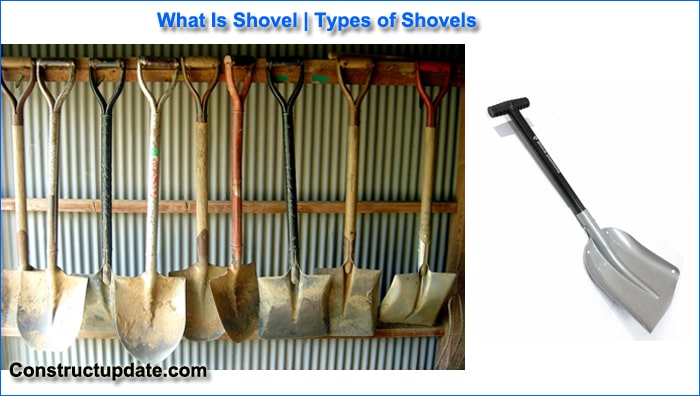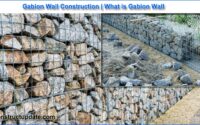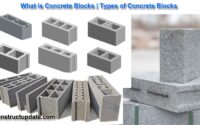What is Shovel and its Types | Parts of Shovel
A shovel is a tool that is used to dig, lift, and move bulk items like soil, coal, gravel, snow, sand, or ore.
The majority of shovels are hand tools with a broad blade attached to a medium-length handle. Shovel blades are often composed of sheet steel or hard polymers, and they are quite durable. Wood (particularly certain types such as ash or maple) or glass-reinforced plastic are commonly used for shovel handles (fiberglass).
What Is a Shovel?
A shovel is a tool used to move various materials such as sand, ore, soil, gravel, snow, cool, and so on. We can also use the shovel to perform things like dig holes, plant new trees, and so on.
The majority of shovels are made as hand tools, and they are lightweight for light work. The handle length is kept medium, and the blade is constructed of strong plastic or sheet steel.

Types of Shovel
Edging Shovel
This shovel is made to produce precise edges around lawns or borders, resulting in a clean, defined boundary. It has a long shaft with a little metal semi-circle attached at the bottom and a straight footplate where your feet can apply pressure. Because it should be pressed straight down into the lawn or soil, the blade is usually sharp and flat. Because it does not need to create deep cuts to be effective, the blade is fairly shallow.
While these are most commonly used for establishing and maintaining garden edging, they can also be beneficial for other activities, such as breaking up superficial plant roots. Because of their thin blades, these shovels are suitable for usage in tight spaces where precision is required to avoid hurting neighbouring plants.
Trench Shovel
The trenching shovel, also known as a ditch shovel, has two purposes. It can dig shallow trenches first, and then clear out and tidy up bigger trenches dug with a more powerful tool. The blade of a trench shovel is long and narrow, with a pointed tip, and is positioned at an angle. Because the blade is so small, there isn’t much room on the footplate to drive the shovel into the ground with your weight, so you’ll have to rely on arm strength instead. This means that digging anything deeper than a shallow trench would be extremely difficult and time-consuming. Landscape gardeners are the most common users of trench shovels.
Flat Shovel
The name “flat shovel” comes from the fact that it has flat blades and is commonly used for dumping or scooping. The blades of a flat shovel are concave by nature.
This is a rectangular shape that aids in the correct transport of the material. This shovel is ideal for loading and unloading materials in the garden, and it can effortlessly transport sand, soil, gravel, and other materials.
A footplate is also included, which will aid in the application of more pressure. These are the most suitable for shallow digging, spreading, and moving.
Tree-Planting Shovel
These shovels are built expressly for planting trees, and they make short work of a job that would take much longer with regular shovels. The blade of a tree-planting shovel is small and ends in a curved or pointed tip. Because of the narrow blade, it can dig a variety of hole sizes by working the shovel in a circular motion into the earth. The shaft can be any length depending on the task at hand, with longer shafts being preferable for flat and even ground and shorter shafts being better for hills or sloped ground. These shovels can be used to dig up a tree for transplantation or to dig a fresh hole in which to plant a tree. Because the shovels are similar in shape to trenching shovels, they can be used to dig shallow trenches when a long trench for a flower bed is preferable over a series of individual plant holes. It can also be used to clean up larger trenches of pebbles and dirt.
Power Shovel
A power shovel is a shovel that is powered by either gas or electricity. Power shovels include snow shovels. Snow shovels are typically tiny in size and relatively light in weight. A jackhammer with a shovel attached is another form of a power shovel. This is used to dig the earth out of the ground.
Post Hole Shovel
A post hole shovel, sometimes known as a post hole digger, is a form of the double shovel. It is made up of two shovels that are joined together and have long, narrow inwardly bending blades with curled tips. The blades’ design aids the shovel in slicing through any roots or other obstacles in their path. The blades form a cylindrical shape when they are closed together. A post hole shovel is generally used to dig deep holes into which fence posts are put. They accomplish this by digging, pinching, and lifting a cylinder of earth from the ground in one fast motion. A post hole shovel is a good investment if you have a lot of post holes to dig.
When compared to digging holes with a digging shovel, it takes a fraction of the time and produces far neater holes, resulting in a clean and professional-looking finish.
Handheld Shovel
Garden shovels, garden trowels, hand shovels, hand trowels, and garden spades are all names for these shovels (though calling this a spade would be inaccurate). These are small shovels with short shafts that can be used for a number of chores in the garden, such as digging out weeds, removing plants, and digging holes for new plants. These tools come in a variety of shapes and sizes, but they all feature a narrow rounded or pointed blade that spans roughly four inches across. A portable shovel’s blade is usually convex, allowing for better scooping.
Root Shovel
Root shovels come in a variety of shapes and sizes, but they all have elongated triangular blades. The tip of these blades can come to a point or be chopped off to give a flattened tip. The blade’s side edges are frequently serrated, which aids in cutting through the roots of established plants. These shovels are made to aid in the removal of plants and trees, whether for transplanting or disposal.
Their blades are effective for cutting through old trees’ stubborn, established roots, which may then be removed to provide room for new roots to grow and spread. These shovels can also be used to dig holes for new trees or plants to grow in.
Scoop Shovel
The scoop shovel has a big blade compared to other shovels. The scoop shovel has a shorter handle and shaft than most shovels, making it easier to use.
The scoop slope’s blade can be rounded at times, although it usually has a flat tip. Scoop shovels have rigid side edges with scooped forms for easy material movement. Scoop shovels are highly handy for moving a huge number of materials such as gravel, soil, waste, and wood chipping.
This sort of shovel can be made out of a variety of materials, however, aluminium shovels have a shorter lifespan than other materials. However, because this aluminium shovel is lighter in weight, you may easily move large objects with it.
Snow Shovel
Most people are unaware of what a snow shovel is, but if you live in a hilly nation, you are likely to use one on a regular basis, as it is the most important aspect of hilly civilisation.
The snow shovel has a long shaft and a large size, and it is composed of plastic, wood, and metal. The snow shovel’s blade is big, and the shovel’s design is rectangular with vertically curved edges. The shovel’s modular design allows it to be used with any type of material that can be easily passed through.
Parts of a Shovel
A. Grip
The highest section of a shovel, which is attached to the shaft, is the grip. It can have a wooden, plastic, or metal handle, but it’s more likely that there won’t be one at all, and you’ll have to operate the shovel by gripping the top of the shaft. A grip handle will be fitted to the shovel shaft if it is constructed of fibreglass to assist prevent splinters. Shorter shovels and digging shovels commonly have a D-shaped handle to help with grip.
B. Shaft
The shaft of a shovel is the long, ‘pole-like’ portion of these tools that is utilised to provide leverage when operating them. Typically, they are composed of wood, fibreglass, or metal. In terms of shovel use and durability, all of these materials have advantages and disadvantages, and the type you choose may come down to personal preference or money. Metal shafts are the most durable and long-lasting, but wooden shafts are more ergonomically and aesthetically beautiful, and traditionalists prefer them. The length of a shovel shaft varies, and the height of your shovel should be adjusted to your height to make it comfortable to use.
C. Collar
The blade of a shovel meets the shaft at the collar. The collar must be secure and robust; otherwise, it may crumble or snap during hard lifting. The collar is normally riveted or screwed to the shaft and handle of the shovel, and it can be detached if either end has to be replaced. Because a blade has a far longer lifespan than the shaft and handle, you can buy replacements and attach them to your existing blade at the collar if either of those parts fails.
D. Kickplate
A shovel’s kickplate is also called a step. Although not all shovels feature a kickplate, it is the topmost edge of the blade where you can insert your foot to provide pressure. Kickplates are commonly found on digging shovels, allowing the user’s extra weight to be used to dig deeper into the earth. Using a kickplate improves results and makes the job easier for the user because they can dig using their weight rather than simply their arm and back muscles.
E. Blade
A shovel’s blade is the lowermost portion of the tool that comes into contact with the ground. It’s normally composed of metal or aluminium, but it could also be constructed of fibreglass or plastic in some cases. Shovel blades vary in a variety of forms and sizes, and the design of the blade is likely the most significant distinction between shovel kinds.
F. Tip
The lowest edge of the blade, furthest from the shaft, is the tip of a shovel. Depending on the shovel’s intended usage, it can take a variety of shapes. For scooping or moving, flat tips are excellent, whereas pointy and rounded tips are best for cutting and digging.





